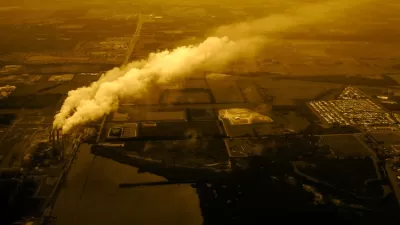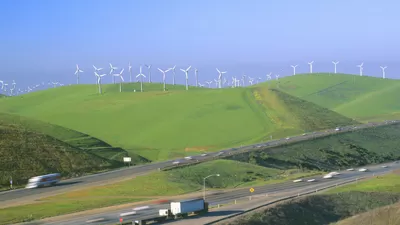Even as the world (unsuccessfully) tries to formulate a treaty to get nations to reduce their carbon emissions, researchers indicate it may be too late - the tipping point may have been reached. But what if CO2 could be extracted from the air?

Pipedream? Not if Carbon Engineering, a Canadian start-up company "formed in 2009 with $3.5 million from Bill Gates and others" has its way. A more immediate application of the technology, however, may lie "in developing a rational price for carbon emissions" according to Timothy A. Fox, head of energy and environment at the Institution of Mechanical Engineers in London.
Anne Eisenberg writes about the company and the technology - an application of the controversial process known as "carbon capture and storage" that may be essential to mitigate climate change, particuarly for the developing world that increasingly has turned to coal, the most carbon intensive fossil fuel, for power generation. According to World Resources Institute, "CCS is a critical option in the portfolio of solutions available to combat climate change, because it allows for significant reductions in CO2 emissions from fossil-based systems, enabling it to be used as a bridge to a clean and sustainable energy future."
"Yet the cost of capturing carbon dioxide directly from the air has yet to be demonstrated, said Alain Goeppert, a senior research scientist at the Loker Hydrocarbon Research Institute at the University of Southern California. Dr. Goepper recently reviewed the literature of air capture technology.
“There is a lot of speculation of how much it will actually cost,” he said, with estimates from $20 a ton to as much as $2,000. “We won’t know for sure until someone builds a pilot plant.” (An average passenger vehicle generates about five tons of carbon dioxide a year.)"
Even if the 'capture' part proves financially, feasible, there's still the 'storage' part. Eisenberg writes that an immediate, if somewhat ironic application would be for "enhanced oil recovery" whereby the CO2 is used to extract 'stranded oil resources'.
As for permanently burying (or sequestering) the extacted carbon dioxide, according to a recent U.S. Department of Energy report, there are "at least 2,400 billion metric tons of U.S. CO2 storage."
FULL STORY: Pulling Carbon Dioxide Out of Thin Air

Alabama: Trump Terminates Settlements for Black Communities Harmed By Raw Sewage
Trump deemed the landmark civil rights agreement “illegal DEI and environmental justice policy.”

Study: Maui’s Plan to Convert Vacation Rentals to Long-Term Housing Could Cause Nearly $1 Billion Economic Loss
The plan would reduce visitor accommodation by 25% resulting in 1,900 jobs lost.

Planetizen Federal Action Tracker
A weekly monitor of how Trump’s orders and actions are impacting planners and planning in America.

Wind Energy on the Rise Despite Federal Policy Reversal
The Trump administration is revoking federal support for renewable energy, but demand for new projects continues unabated.

Passengers Flock to Caltrain After Electrification
The new electric trains are running faster and more reliably, leading to strong ridership growth on the Bay Area rail system.

Texas Churches Rally Behind ‘Yes in God’s Back Yard’ Legislation
Religious leaders want the state to reduce zoning regulations to streamline leasing church-owned land to housing developers.
Urban Design for Planners 1: Software Tools
This six-course series explores essential urban design concepts using open source software and equips planners with the tools they need to participate fully in the urban design process.
Planning for Universal Design
Learn the tools for implementing Universal Design in planning regulations.
Caltrans
Smith Gee Studio
Institute for Housing and Urban Development Studies (IHS)
City of Grandview
Harvard GSD Executive Education
Toledo-Lucas County Plan Commissions
Salt Lake City
NYU Wagner Graduate School of Public Service



























